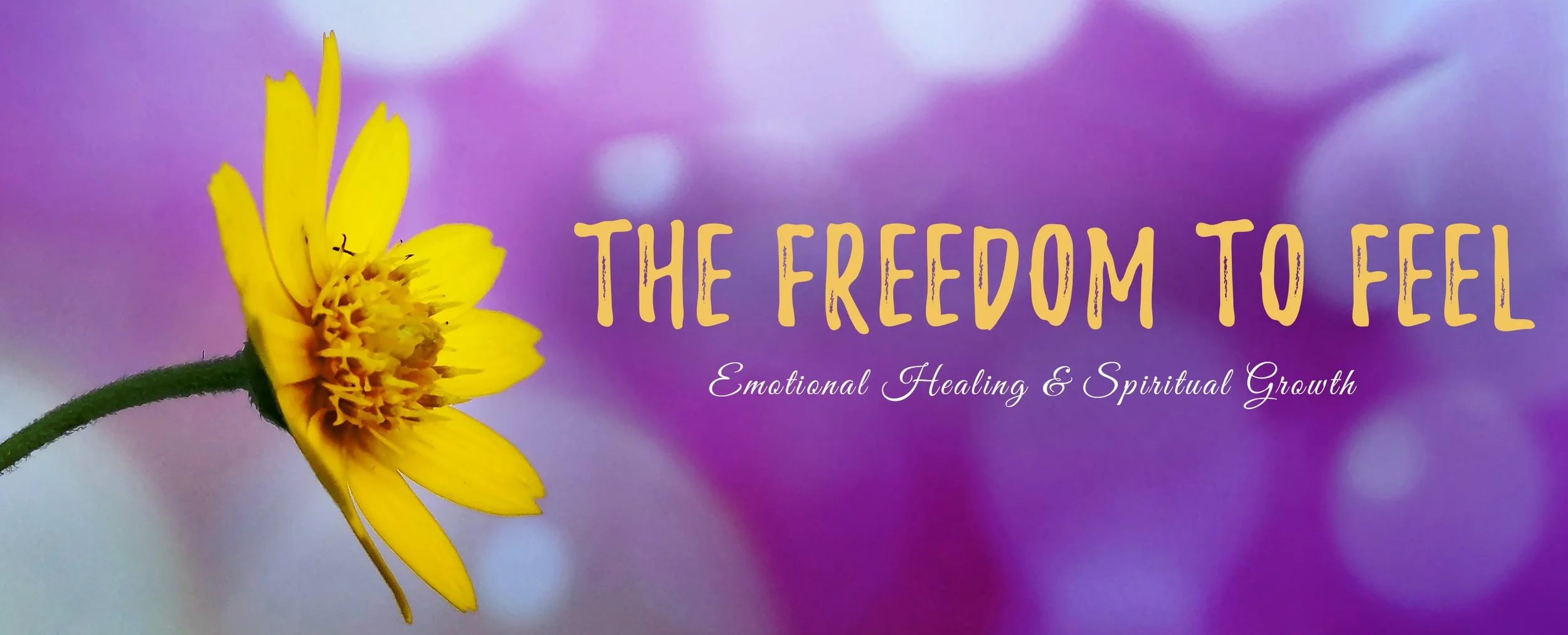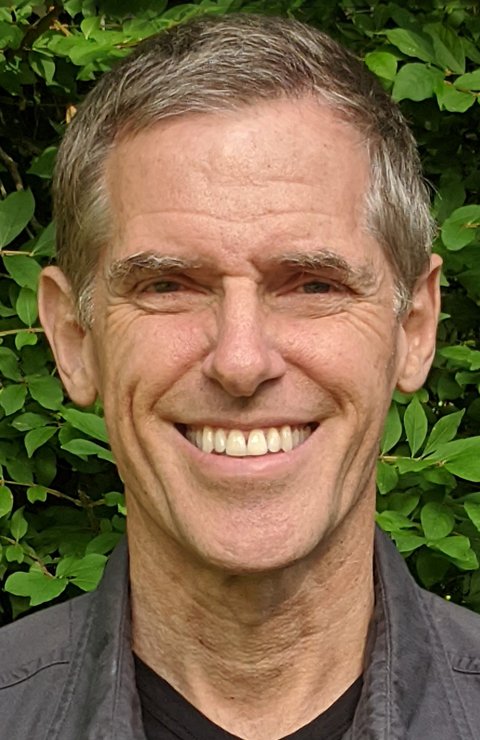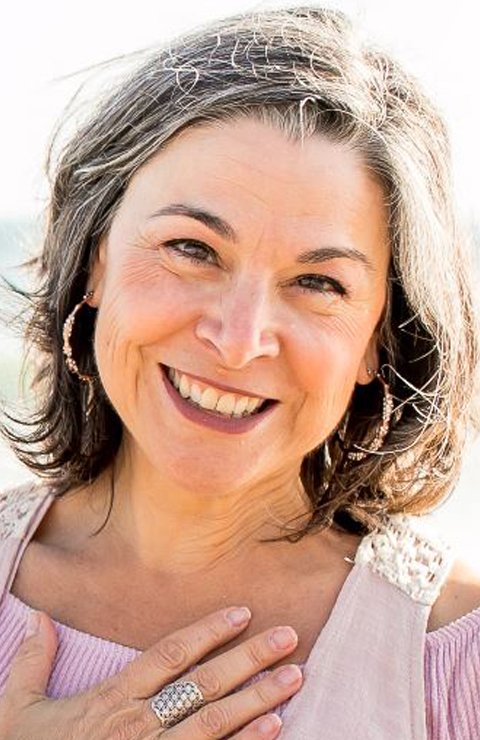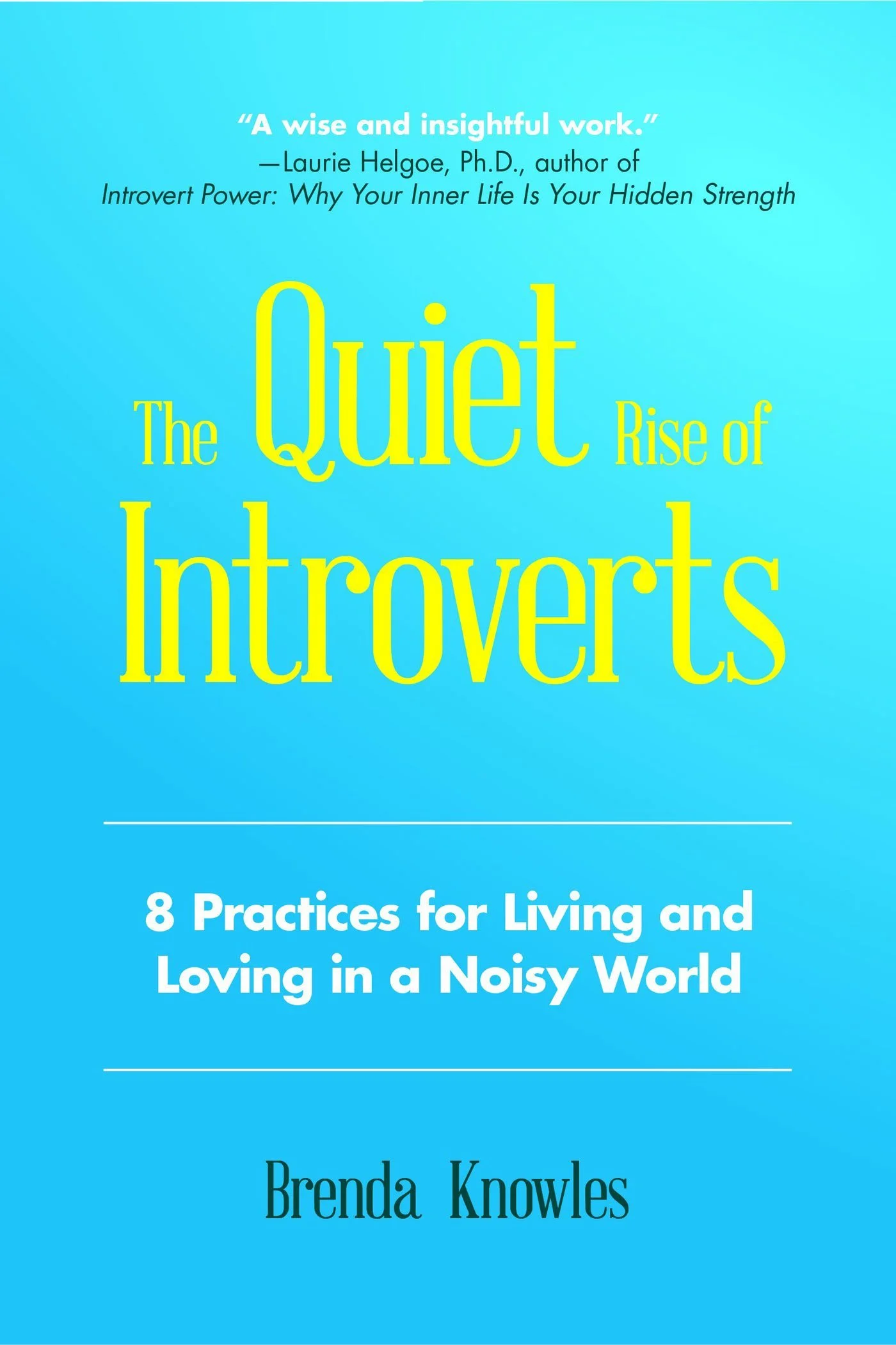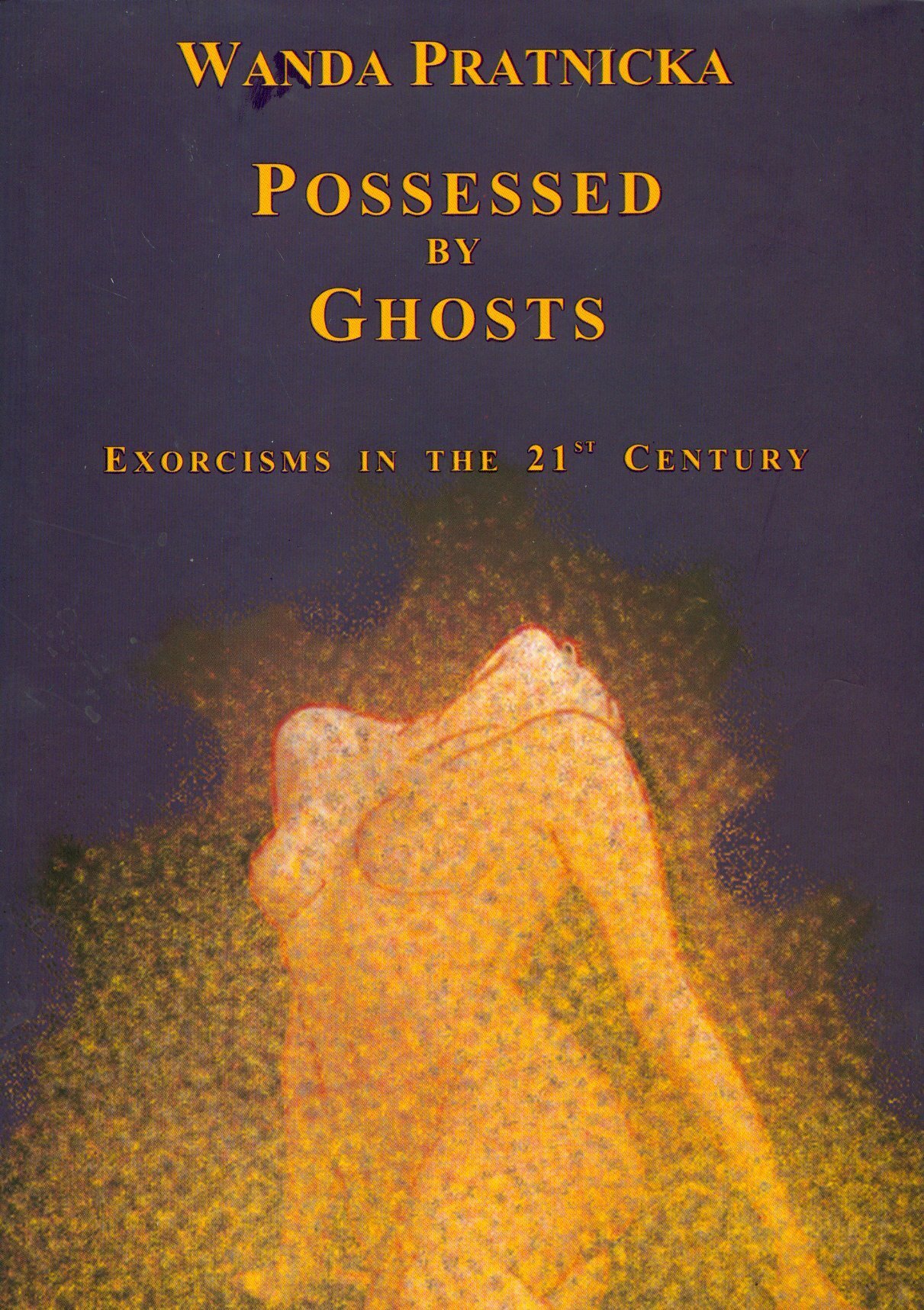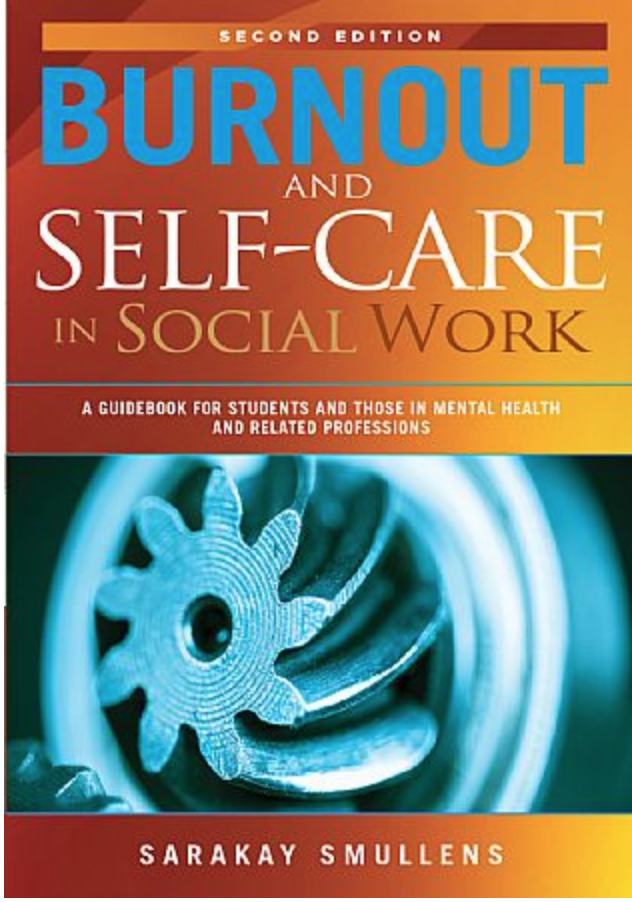CALM PARENTS — RESILIENT CHILDREN – ENJOABLE LIFE!
These are some inspiring and insightful passages in “Calm Parents and Children: A Guidebook” by Gayle Kimball
— “It's not the load that breaks you down, It's the way you carry it.” Lena Horne
— “I want to be improbable, beautiful, and afraid of nothing, as though I had wings.” Mary Oliver
We live in challenging and stressful times with the pace of change speeding up in the increasingly globalized world. This section addresses how we can raise centered children with calm parents who know how to manage stress. Eva Detko, Ph.D. created an Emotional Toxicity Questionnaire to check out your state of mind. A stress test identifies the most difficult life changes, with the death of a spouse and divorce at the top of the list. The Greater Good Science Center offers a stress and anxiety quiz, along with many other self-studies such as describing your happiness level or your social capital.
Our brain changes according to our thoughts, emotions, and behaviors, which can be measured in changing brain waves, such as gamma waves are associated with being relaxed and happy while highly alert. Therefore, “what we focus on matters” as we create new neuronal pathways. This is not new knowledge: Proverbs 23:7 stated, “For as he thinketh in his heart, so is he,” and the Buddha said, “The mind is everything. What we think, we become.”
A simple technique is when an unhealthy craving or habit surfaces, focus on something else like counting backward and tapping on the forehead. You might keep a diary to track your triggers to be aware of what situations to avoid or change.
Stress overload underlies the large majority of health problems, according to Laurel Mellin, Ph.D. author of What’s My Number? and other books. She reports that our stress level can impact others around us and underlies up to 90% of health problems. She advocates treating stress overload by learning how to rewire the brain by activating emotions, rather than with cognitive changes or treating symptoms with medications. She finds that positive thinking and cognitive restructuring don’t erase the problematic brain circuits but activating emotions and clearing them does the job. Hence her method is called Emotional Brain Training--research about EBT is available online.
Dr. Mellin explains that since our emotions are “psychobiological,” the key to coping with stressors is to train the brain’s neuronal circuits. She explains that when the brain receives a stimulus it responds with either the stress-resilient or stress-reactive circuits, depending on which is the most imprinted by habits that usually began in childhood. The reactive circuit triggers emotions that can inhibit the brain’s rational processes so that we over-eat or over-drink, get anxious and depressed and so on. New habits can change the brain so that the resilient mode kicks in instead of the emotionally-reactive mode.
Dr. Mellin explains the clearing process according to five different levels of stress with five tools to feel joy--associated with dopamine and endorphins--in her book What’s My Number? She suggests starting your day with the statement “I am creating joy in my life.”
Scientist Candace Pert, Ph.D. also advocates clearing emotions in The Molecules of Emotion, but using meditation to counter ongoing stress that impacts our physiology in this manner:
. . . the largely autonomic processes that are regulated by peptide flow, such as breathing, immunity, digestion, and elimination, collapse down to a few simple feedback loops and upset the normal healing response. Meditation, by allowing long-buried thoughts and feelings to surface, is a way of getting the peptides flowing again, returning the body, and the emotions, to health.
Meditation rewires the brain. A Harvard study of beginner participants in an eight-week meditation course found changes in their brains, as with more emotional control of the amygdala. Focused attention shrinks the amygdala which is responsible for processing sadness, anxiety, and negative emotions and can overact. Scientists discovered that regular meditation increases tissue mass and density in the area of the prefrontal cortex that controls impulses and maintains attention, and increases thickness in the regions of the brain responsible for body awareness and stress management.
Q: How do we raise resilient children rather than fragile anxious ones?
A: Educators teach resilience skills (such as at the Yale Center for Emotional Intelligence), the study of how to not be defeated by challenges, but rather to adapt to them and use them to grow stronger. Harvard professor of psychiatry Robert Brooks explained in The Power of Resilience, “Resilient people are like trees bending in the wind. They bounce back.” They get support from and help other people, they think of the glass as half full rather than half empty, they’re spiritual, they’re playful, and they take good care of themselves….
GIRLS LEAD THE CURRENT CLIMATE MOVEMENT
These are some inspiring and insightful passages in “Climate Girls Saving Our World: 54 Activists SpeakOut” by Gayle Kimball
— Our most urgent problem is the complex of the climate crisis, global warming, pollution, and environmental destruction. Everyone is impacted and must take action in the decade ahead or tipping points become irreversible, such as the thawing of Arctic permafrost and the Antarctic ice sheet, extinction of many species, and the loss of rainforests and coral reefs. Once reached, there will be no hope of remediation.4 We must reach net-zero greenhouse gas emissions (GGEs) by 2050, which means cutting them in half by 2030. Humans, in our Anthropocene Epoch, have caused rapid warming in contrast to the previous Holocene Epoch where temperature didn’t vary more than a degree for over 12,000 years.
— Climate girls are fierce because they fear for our future and are furious at greedy adults for destroying our environment, as Severn Suzuki warned in 1992. Since then, warming, and pollution keep on increasing, inciting Greta Thunberg to make similar warnings in 2018. Sadly, climate organizations led by the UN haven’t taken real action, even going backward when President Trump withdrew the US from the Paris Agreement of 2015. No other creatures destroy their ecosystem like homo sapiens, causing young activists to lose respect for adults in power.
Girls lead the current climate movement, the large majority of the activists in every youth-led climate group I’ve discovered. They explain that they are caring, have more affinity with nature, and are less afraid of peer pressure than teenage boys. Many think of themselves as out of the norm so they have less to lose than popular students by standing out. The large majority of the 54 activists we’ve heard from are only or first-born children, used to leading. Many of them are from privileged backgrounds, able to attend private schools, travel to conferences, and skip school to strike. They stand on the legacy of the global women’s movement, all but two strongly identifying as feminists and many reject the concept of binary gender. Determined not to give up hope, they predict they will be changemakers.
The activists view the current focus on individual actions like recycling as a smokescreen to obscure the need for action to stop the 100 companies that produce 71% of the global greenhouse gas emissions. Activists fault the capitalist system for rewarding the polluters, as with government tax reductions or building coal plants. They demand that governments recognize the climate emergency and implement plans to overhaul the capitalist system with its emphasis on extraction, moving to a regenerative circular economy. This radical transformation includes making traditional masculinity a dinosaur, as well as creating a circular economy. They aim to make their own groups non-hierarchical but report it can be problematic when some people have more time to give to organizing than others and discrimination still exists in the movement.
Since we have only a few years before global warming reaches tipping points that can’t be repaired, we can’t wait for Gen Z to assume positions of power. Therefore, youth activists emphasize “electorialism,” voting in progressive politicians now, although many of them aren’t old enough to vote. The European Union seems most committed to implementing a Green Deal, along with Nordic countries, and municipalist cities like Barcelona, Vancouver, and Preston (UK) lead the way.
— The activists and I both edited the transcript of the Skype video interviews, which are available to view on my YouTube channel. It includes their social media links, mainly Twitter and Instagram, to stay current with their work. I learned to respect Gen Z highly although they’re accused of being apathetic, which gives hope, plus became more conscious of my contributions to climate change...
THE KEYS FOR OPTIMIZING YOUR ENERGY PRODUCTION
Here are some insightful passages in “From Fatigued to Fantastic! Fourth Edition: A Clinically Proven Program to Regain Vibrant Health and Overcome Chronic Fatigue” by Jacob Teitelbaum, M.D.
— The keys for optimizing energy production can be summarized with the acronym SHINE:
1- Sleep
2- Hormones
3- Infections
4- Nutrition
5- Exercise as able
One of the most effective ways to improve energy, mental clarity, and immune function while decreasing pain and weight gain is to simply get your eight hours of sleep a night.
2. Begin by making time for sleep. Do this by cutting out things that don't feel good.
3. Create a restful bedtime routine.
4. If your mind is wide awake and racing at bedtime, consider phosphatidylserine, a natural phospholipid (100 to 200 milligrams), or an herbal mix called Sleep Tonight taken an hour before bedtime.
5. Wake frequently in the middle of the night? This suggests low blood sugar. Have a high-protein snack (1 to 2 ounces) before bedtime. A hard-boiled egg works well
6. Take a mix of six herbs called the Revitalizing Sleep Formula. You can also add a mix of four essential oils called Terrific Zzzz. If using melatonin, use the Dual Spectrum Melatonin 5 Mg by Nature's Bounty. All three of these can be used together.
7. Anyone who has high blood pressure, snores, falls asleep easily during the day (especially while driving), has a shirt collar size of 17 inches or larger, or is overweight should consider getting tested for sleep apnea.
8. If you tend to scatter your sheets and blankets, and especially if you tend to kick your bed partner or if you note that your legs tend to feel jumpy and uncomfortable at rest at night, you may have restless leg syndrome (RLS).
9. Most people with CFS/FMS will need to add medications as well. These are discussed in Chapter 13, "Sleep Intensive Care."
One of the most effective ways to improve energy and mental clarity is to simply get your eight hours of sleep a night. But is it really that simple? Like so many other things in life, the answer is yes . . . and no. Let's put things into perspective.
Until 140 years ago, when lightbulbs were invented, the average night's sleep in the United States was nine hours a night. Average. That means as many people got ten hours a night as eight. Going back further in time, to most of human history, anthropologists tell us that the average night's sleep was eleven hours. Most nights, when the sun went down it was too dark, boring, and dangerous to be outside. So people went to sleep. Then they woke up with the sunrise, an average of eleven hours later. Now we are down to an average of about six and three-quarters hours of sleep a night, compliments of lightbulbs, radio, TV, the interne, social media, and so on. This means the average person has lost 30 percent of their sleep in the last century.
In addition to simply not having time to get your eight hours of sleep a night, you may also find that the stress of modern life is causing insomnia. In this chapter, I will teach you how to treat day-to-day insomnia with natural therapies and sleep hygiene. In Chapter 13, "Sleep Intensive Care," we will discuss sleep medications for those with CFS and FMS.
Beyond giving us energy, sleep has a number of critical functions. For example, sleep:
• Is when tissue repair occurs, which is why poor sleep causes pain.
• Is also critical for proper growth hormone production. Growth hormone has also been called the "fountain of youth hormone" and is associated with looking young as well as increasing muscle and decreasing fat.
• Has been shown to be critical for immune function.
• Is important for weight regulation because appetite-suppressing hormones such as leptin are produced during sleep. Studies have shown that poor sleep was associated with an average six-pound weight gain. In a study of 68,183 women, followed over sixteen years, those sleeping five or fewer hours per night had a 32 percent increased risk of gaining thirty-three pounds relative to those who slept seven hours per night.
So, it pays to make time for your eight hours of shut-eye. Not only will you have more energy and less pain, but you'll lose weight and look younger as well.
A MAGNIFICENT CONSCIOUSNESS RESIDES IN YOUR HEART
Here are some inspiring and insightful passages in “The Magnificent Soul: The Art of Living in a World Founded on Consciousness” by George Chyz
— I’ve heard some people claim that everything is love.
If love was ever-present and the basis of everything, then why don’t we have a world of abundant peace and prosperity today? Could a world made of love result in widespread competition?
In 2019, there where 436 mass shootings in the USA. That’s more than one per day! Just forty years ago, these hatred-fueled crimes began taking place more often than once a year. While some people are opening to love, most people seem to be focused on power.
Although love may not be the foundation of reality, my Soul and the experiences it guided me through have convinced me love is the most precious treasure that has been discovered since the beginning of time. To enable open-hearted people to explore love to its fullness, the Age of Love will emerge in way that honors everyone.
Gratefully, love dissolves the self-serving lust for power that has accompanied individuality. It draws people together with desires to support one another in spite of the convincing illusion of separation and individuality. If you’re a Romantic who is opening to love and learning about it presently, as I am, you may have noticed how the power of love instills open-hearted people with desires to give generously. Additionally, you may have discovered how the power of love seems inexhaustible and wonderfully beneficial for all of life, as it encourages synergy amongst everything and everyone.
Eventually, at the end of the Age of Love, when love has fully blossomed, little humans will have discovered much more about love. Those revelations will most likely inspire the next adventure, the one that will commence after the end of time.
— Gratitude and love both come from the Superconscious-Soul that resides in the heart. Both are forms of intuition. Our Souls are Trees of Life that bear the fruit of love. This fruit contains a precious seed that is gratitude. Planting these seeds of gratitude causes love to grow in your heart and the hearts of whomever you bless with appreciation. To plant a seed of gratitude, all you need to do is express the feeling of appreciation whenever it is offered from your heart. All seeds are truly magical, and the seeds of love are gratitude. These magic seeds spoil quickly if they aren’t planted. That being the case, one of the most important things that you can do is to simply say “thank you” every time you feel the slightest sense of appreciation.
Even if someone tried to fake following the Way-of-the-Heart path, their Soul would be fully aware of that person’s intentions, simply because a person’s Soul knows all of their thoughts.
In regard to the benefits, many people have thanked me for sharing this book’s message and told me that early versions improved their connection to their Soul and enhanced their lives.
So, it seems that the time has come to put all the cards on the table and see where the chips fall.
If you have intuition, your Superconscious-Soul has all the happiness, love, knowledge and miraculous powers you’ll ever need.
If you’re a Pragmatic and you want to explore the intuitive Romantic path, try using the decalcification method offered at the end of Chapter 19.
Regardless of who you are or what you believe, a magnificent consciousness resides in your heart. Some have named this inner divine consciousness the ‘Aumakua, others the Holy Spirit, the Tao, the Atman, etc. I chose to label this divine guardian the Superconscious Soul. Regardless of the name, you may prefer to use, if you are drawn to look within, I hope what has been shared in this book helps you deepen your relationship with this magnificent part of yourself.
FIND YOUR TRUE VOICE — EXPRESS YOUR PRECIOUS ENERGY!
Here are some inspiring and insightful passages in “Experiencing The Shift - Book One: A New Way Of Thinking Seeing And Being” by Bonnie Barness
— “You now know that your feelings are directly related to what you think. You know too if you want to feel the joy and peace that is always within, it is necessary to take a look at your thoughts in order to see which ones lead to feelings of unworthiness, shame, and guilt, and which ones lead to feelings of joy and happiness.”
“As human beings, though we do not have any control over what thoughts come up in our mind, we do have the ability to choose which ones we will focus on and listen to. We also have the ability to choose which ones we will act upon.”
“Beliefs are thoughts that are charged with intense emotion. You discovered, while under the laurel tree, how many of your beliefs were created. Your past actions were based on these beliefs, though you may not have been aware of it at the time.”
“The life that you have was created by the thoughts and beliefs you chose to act upon. If you want to feel a greater sense of well-being and to create change in your life, change some of your thoughts.”
“Most people are not aware that they have this ability. Their thoughts arise, and then they react. You do have the ability to choose which thoughts you will focus your attention on, and which you will not. This choice, in turn, determines to a great degree how you will feel and the quality of your life.”
“Every decision that you have made in your life, and that you are making right now, is based on your thoughts and feelings. In the past, if you were not aware of what you were thinking, your actions were not completely in your control. The greater your awareness of your inner world, the greater your ability to create the life that you desire.”
“I believe that we come into this world as a beautiful Soul and that through the choices we make, we create who we become in the world. The choices we have made in the past have created much of what our lives are right now. These choices were based largely on our thoughts and feelings. The choices we make today and in the days to come will also be made based on what we think and feel now and in the future.”
“The peace that you seek is within you at all times. It is what you feel when you are connected with your soul, your True Self. Awaken to this Truth. No matter what is happening around you, you have the ability to stay connected. Choose your thoughts wisely. Let your thoughts and actions reflect your True Self. Actualize your True Self in the world. It is your purpose. It is your destiny.”
PRACTICAL STRATEGIES & UNIVERSAL WISDOM FOR WORK AND LIFE
Here is an insightful passage in “The Illuminated Brand” by David Corbin
— “…I have no reason to believe that we won’t be able to deal with whatever we are confronted with. We are doctors and nurses. That’s what we do. We deal with whatever we are faced with when it walks through the door—but we don’t strain our existing resources because something just might come through the door.”
That was precisely what he told his brother-in-law, Kevin. Kevin was a paramedic, and as a first responder, he understood emergency medicine. Over the years, the two men had had many discussions about the changes and expectations in providing emergency care and for the most part, they were in agreement on the issues. They had no control over how many patients they would serve in a day. They were faced with triaging, diagnosing and treating patients at a rapid pace—often in life-and-death situations. On top of that, they dealt with anxious and upset family members and from time to time, had to deal with individuals who could place themselves or their coworkers in life- threatening situations.
But it was precisely that—the unknowns, the ever-changing routine, people, and situations—that got their adrenaline flowing. It was a rush and, in part, was what made them love their jobs and kept them dedicated to coming back to it every day, regardless of what that day might entail.
So maybe it was natural that something like a pandemic didn’t scare Dr. Hicks. The unknown and risks were part of his daily life, maybe even in his DNA. It was why he’d chosen his specialty, and why he was so darn good at it.
Greg’s leadership and abilities were highly respected across the hospital. He did his job, and he did it well. No one could or would argue that. However, Greg’s reluctance to face this potential crisis was a concern, not only for Vivian and Phil, but also for some of the technicians and nurses who worked side by side with him in the ED. Greg wasn’t scared of a virus—he’d dealt with them throughout his entire career. But not everyone felt the same. They were quite frightened for what the future might hold, but their fear was silenced by their reluctance to meet with their supervisor’s disproval and disappointment. Greg was the departmental rapport leader, dominated the culture and, well, they just didn’t want to rattle his cage.
The highly esteemed emergency department director wouldn’t face the fact that there could be potential issues down the road. He had absolutely no idea that his staff felt vulnerable and frightened. Even worse, he had no idea that he was at risk of committing involuntary brandslaughter in the highest degree. Until these things were brought to light, Dr. Hicks would remain in the dark….
ABUSE IS TRANS-GENERATIONAL — WHERE AND HOW DOES IT START?
An inspiring and insightful passage in “Life Gave Me Lemons, and I Made Champagne!.” by Aisha Shael.
— Abuse is trans-generational. Where and how does it start? Is it passed on genetically or is it learned behavior? It is easy to see how it can be passed on genetically. Everything is energy: our spirit, our mind, our body (which appears solid), and our thoughts….all energy. Procreation is the conflation of two energy systems (parents) to form a third system (child). If one or both parents have been abused and/or are abusive, that energy—which is vibratory thought- form—becomes a part of the child’s DNA. Per Wikipedia, DNA is: “nucleic acid containing the genetic instructions used in the development and functioning of all known living organisms”.
From this standpoint, we could say the genetic code for abuse is inherited; the child carries the predisposition to become a perpetrator or a victim—or both. It is also easy to see how it can be passed on as a learned behavior. Children absorb information from their environment; they watch, listen, assimilate, and then express what they have learned. When physically harmed by an adult, a child forms a belief that big people (particularly parents) spank/strike/hurt little people and the example is filed away in the back of the mind for future reference. Mental, emotional, and spiritual abuse are processed the same way—the child ascertains that abusive interface is expected and accepted. What is likely to happen when the child matures, becomes a parent, and judges his/her own child’s behaviors as unacceptable? Repetition of the example—unless the adult is making very conscious choices and making a sincere effort to change the old familiar patterns.
My assessment is that the energy of abuse moves from one generation into the next through both conduits: genetic and behavioral. Some of us have received both the encoding and the behavioral example, yet we don’t mistreat our own children the way we were mistreated. How can we account for that? If we have the propensity, what stops us from acting on it? According to Activist/Author James O’Dea, “Each generation is given wounds to heal from the past.” (“Cultivating Peace: Becoming a 21st Century Peace Ambassador”, 2012).
So, perchance, in addition to the propensity to abuse and/or to be abused, our DNA also carries additional, overriding vibrations: those of peace, healing, and the will to live differently. Could it be that we were brave enough to turn the tide because it was Divine purpose to transfigure the energetic pattern, causing that encoded energy to disintegrate….that is, dis-integrate? Could it be that our lives, individually and collectively, are far more purposeful than we perceive from our human vantage point? Far more powerful than our human mind will allow us to believe? Are we, indeed, participating in an evolution authored by Infinite Intelligence? Do we honor that by aligning with peace and love, with the intention for the greater good of all?
THE POWER OF LISTENING TO YOURSELF WITHOUT JUDGMENT
An inspiring and insightful passages in “Helping Effortlessly: A Book of Inspiration and Healing” by Jenn Bruer.
— Do you ever listen in on your thoughts and notice a trend?
The idea behind listening in on yourself without judgment has been truly miraculous for me. It has allowed me to really separate from my thoughts. Achieving autonomy over thoughts is an incredible feeling. Separating from my thoughts has shown I am not my thoughts. And you are not your thoughts. Thoughts are powerful and important, yes, but for the most part we haven’t truly exerted our control over them. We live under the false assumption that our thoughts just happen and that we have no control over them. But once we control our thoughts, we can eventually control our feelings.
When you hear your thoughts, and identify them as negative, stop and observe. Notice that when you become an observer of your thoughts, you begin to sense there are two of you. That other person is your ego. The ego isn’t a bad thing; we all have one. We want to love our ego and acknowledge that it was meant to keep us safe. Our ego is the shallow part of us and we learn to live happily alongside it. Don’t be alarmed if, when you first listen in on your thoughts, you notice trends you didn’t even know existed. (Like the time I realized I was overusing the word “infestation,” usually in reference to rodents living in my back-yard deck, or harmless household spiders.)
The person observing your ego is the real you, the true you, the one without the need for all the social structures. That’s the you that never needs to succeed a day to know your worth because, success is not something the real you needs to know, ever. That observer in you is the tallest mountain, the clearest diamond, the rarest gem that resides deep within you, me and all of us. That is where your truth resides. When someone held you as a newborn, this incredibleness was all that you were because you were free from ego. Even then, you helped because when someone holds a newborn baby they are helped by pureness, by the pure gift of love. This is the person I want to help you get to know.
The practice of gratitude is one way to begin to know the real person. As you observe your thoughts, try to reframe the negative ones into positive ones, by being compassionate instead of loathing yourself. Consider, for example, these statements that I have heard repeated in so many variations over the years: “How can I call myself a social worker?” or “When was the last time I helped anyone?” or “Aren’t we just making things worse?” It is within our control to actively search for a better feeling-thought such as: “I enjoy going into the office each day and seeing Charles, he is so funny and such a friendly, loving person,” or “I am so grateful to have a job, some people can’t find a job.”
This is about identifying truths that are more positive and feel better than the negative things that may also be true. We can all agree that there are things in our lives that could be better or, let’s face it, that completely suck. This isn’t about me trying to convince you that your life is butterflies and unicorns, this is about turning your awareness onto the things that don’t suck and away from the things that do.
SECRETS TO A HAPPY MARRIAGE AND LIFE
Here are some inspiring and insightful passages in “Happy Marriages: 30 Global Couples Tell Their Stories” by Gayle Kimball
— Paul McCartney, married three times, reports, "It's always a splendid puzzle. Even though I write love songs, I don't think I know what's going on. It would be great if it was smooth and wonderful all the time, but you get pockets of that, and sometimes you could be annoying." Good marriages are characterized by a commitment to not withdraw, quit, or blame when difficulties arise, and to be tolerant of the partner's foibles. In return, we can ask for forgiveness for our faults.
Couples report that marriage has ebbs and flows like waves, and spouses should not catastrophize about the low period as a cause for divorce. The low point of general happiness, according to a global study, is midlife, around 48. With patience, work, attention, and a leap of faith, another good wave appears, just as spring follows winter. Married for 26 years, author Scott Huber told me in our video interview that his marriage blossomed after their three kids moved out and he advises never giving up during hard times. He and his wife are now enjoying building a summer cabin in Wyoming by themselves.
After counseling couples for more than 30 years and learning from his own marriage of over 40 years, Gary Chapman (author of The Five Love Languages) observed that marriages are always in transition, like the seasons. He defines spring as a time of happy new beginnings. Summer is a time of deep satisfaction and constructive communication. (A study found that the happiest time in our lives is the late 30s, which seems like Chapman's summer.) Fall is associated with uncertainty, blame, and "nagging emptiness." Winter brings difficulty caused by rigid unwillingness to compromise, so couples feel hurt and angry.
Chapman found that the most common mistake that leads to fall and winter stages is “allowing negative emotions to dictate their behavior,” rather than focusing on positive characteristics. As a Christian, he suggests following Jesus’ life of service to others. Chapman encourages learning about your partner’s love language and practicing empathetic listening (instead of egocentric listening) to enhance understanding. Then partners can learn from their differences and appreciate them.
Like Chapman, Jed Diamond, a therapist and author, identifies stages in marriages. He has been married three times so he has both personal and professional motivations to understand why marriages fail. In our video interview, he explains the five stages of marriage and also more extensively in his book The Enlightened Marriage.28 He tells his clients that 90% of their problems have their roots in childhood, just as he was initially attracted to emotionally cold women like his mother. The unconscious hopes to heal the childhood wounds by repeating the pattern.
— I was impressed that after decades of marriage our 30 couples are still learning about each other with enjoyment. We in turn can learn from their misunderstandings and solutions, as well as from the conflict resolution methods explained by our experts since disagreements are inevitable between two imperfect humans.
What stood out for me in reviewing the research and hearing the couple’s stories is the power of our unconscious patterns, beliefs, and predispositions, like the unseen depth of the iceberg that propels it through the water. This phenomenon is explained by psychologists in the first two chapters and illustrated in stories of couples like Robin and Alvin who realized the impact of their religious upbringing on their expectations of each other or the more obvious cultural expectations when two different cultures combine. Understanding each other requires talking about feelings, which also prevents boredom.
CHANGING YOUR LIMITING BELIEFS — EMPOWERING YOUR LIFE
These are some inspiring and insightful passages in “Heal Yourself: Body ~ Mind ~ Spirit” by Sandie Gascon
— A limiting belief is something you believe you cannot do. Henry Ford said, “Whether you think you can, or think you can’t, either way, you are right.” In order for you to create something, you must believe it is possible. If you do not believe you can do it, you will not be able to do it.
How do we change a limiting belief to an empowering one? That is easy. We get the new one into our minds the same way the old one got into our minds: we think the thought over and over. We have all heard the saying, “If you tell a lie enough, you will start to believe it.” This is because the new image rewrites the old one in the subconscious. The subconscious holds our beliefs, and it responds to repetition. We can do the exact same thing with our truths. Repeat them over and over. Your current limiting beliefs are the lies.
Another name I use for empowering beliefs is “my truth.” It is not something I learned from someone else without my filter. It is something I sought out. It is something that resonates deep inside my being. It brings me closer to source energy, to my higher self. It feels good and raises my vibration. When I stumble across these truths, the only way to describe them is a revelation. Maslov calls it “peak experiences.” The Buddhist term is “satori.” As A Course in Miracles states, “Revelation must be experienced to understand the feeling.
“Whenever you are working to manifest something, your desire and your belief need to be aligned. If you desire to be wealthy but have a belief that wealthy people are evil and keep poor people poor, you will have to first work on creating a new belief around wealth through repetition. In this example, it can be done by seeing all the good wealthy people do and visualizing that over and over until it sinks into the subconscious. Visualize how you would help others when you are wealthy.
Whenever you are working on your “Create Your Ideal Life Meditation” from “Part Three: Spirit”, you will feel discomfort if you are visualizing something that you want that conflicts with a belief you have. Write it down and work on creating a new belief through repetition. This can go for things like health, too. If you want to be healthy but truly do not believe you can be, you will want to work on the reasons why you can. Often, finding other people who have healed from something similar can help. The people who invented photographs, televisions, microwaves, lightbulbs, space crafts, and all the inventions in the world believed these impossible things were possible. They did not do it by focusing on what they did not want. They did not invent flying by focusing on falling. If they can do it, you can, too.
AN INSPIRING PATH TO PEACE
An inspiring and insightful passage in “Finding Zen in the Ordinary: Stories and Reflections” by Christopher Keevil
— A poem by a sixth-century Zen teacher, called Faith in Mind, opens with the following:
The Great Way is not difficult
Only avoid picking and choosing.
If you don’t grasp or reject,
It fully reveals itself.
I used to work for a large advisory firm where corporations hired us to solve business problems, such as how to increase the speed of developing new telephone cable connectors, or how to produce orange juice at a lower cost.
In trying to solve a problem, it would often seem like solutions were hampered by an “either-or.” Faster development of telephone cable connectors would lead to higher failure rates. Lower cost in producing orange juice would compromise the taste.
Our telephone-cable client was turning out new types of cable connectors in nine months. The new-product design team was convinced if the time was shortened, failure rates would rise. But we started calling around and found a Japanese company that was turning out new products with excellent quality in two-and-a-half months.
The design team was stunned. But when together we looked carefully at the design process, unnecessary steps and redundancies revealed themselves. As a result, our client was able to develop new products at the same quality in three months thereby getting to market faster. Sales volumes rose. The team was elated.
Our orange juice client wanted to reduce unit cost. But much of the cost was in the oranges coming from the growers. This cost was tied to quality. “Good-tasting orange juice requires tasty oranges,” said Walter, the head of manufacturing. “And these oranges are priced by the market. You can’t reduce this cost without compromising the product,” he said adamantly.
One day Walter and I were walking through the plant. We watched the orange trucks arriving, stopping on the scales at the entry point. A sample of fruit was taken from each truck to ensure overall quality. The grower would be paid for the weight of oranges in the truck.
After being unloaded, the oranges were carried by conveyor belt through the culling station. Bad oranges were removed, leaving good oranges to enter the juicer.
Suddenly Walter exclaimed, “Why not track the culled fruit back to each truck, and only pay the grower for the good oranges?”
The orange juice plant started doing this, which caused the growers to become more selective with what they put on their trucks. As a result, unit cost went down, throughput increased, and quality stayed high. Walter was delighted.
In each case our client moved beyond an apparent either-or. A solution previously unseen revealed itself.
THE PRACTICE OF SELF-LOVE AND ABUNDANT LIVING!
Here is an inspiring and insightful passage in “Mindset Medicine: A Journaling Power Self-Love” Book by Mari L. McCarthy
— Grab your pen and write “I love myself ” in your journal. In addition, I want you to think about the last time you
wrote this simple little sentence about yourself. I also want you to be honest and admit if you’ve never written this before!
Next, I want you to write, “I love myself ” again. Then write it several more times.
This won’t take long. It’s only three words. Three incredibly wonderful and powerful words that will transform your life.
Now, I want you to get bold.
I want you to say “I love myself ” OUT LOUD several times. And when I say out loud, I don’t mean just move your lips
a little as you mumble to yourself.
I mean, say “I LOVE MYSELF” out loud. Really out loud.
Not once, not twice, but several times.
Say it with a big sloppy grin across your face. This will
make you feel amazing because it’s very difficult, if not impos- sible, to put a big smile on your face and feel lousy.
For the next step in this journaling prompt, and this is the big part, I want you to take your journal and stand in front of a mirror. Come on, do it!
I want you to stand in front of a mirror, put a big smile on your face, look yourself square in the eyes, and say, “I love myself.” Not once, not twice, but several times.
Now I know you may be thinking, “I’m with you on this, Mari, but do I really have to look at myself in the mirror and say ‘I love you’ to myself out loud?”
Yes, you do!
I am going to explain why by asking you two questions: How many times have you written about how much you love yourself? How many times have you stood in front of your mirror and talked about how much you love yourself? I’m guessing you probably haven’t done these two things in a long time, if ever.
On the other hand, I bet there have been numerous times over the years when you have stood in front of your mirror and said things like:
“What the hell’s wrong with you?” “Why’d you do that?”
“How come you’re not in better shape?” Why don’t you have more money? “Why don’t you try harder.” “You’re worthless.”
“You talk too much.”
If you’ve done this, you’re certainly not alone. We have all abused ourselves while looking in the mirror for one reason or another.
But how many times have you stood in front of your mirror and said:
“I love you! You’re dreamy and incredible!”
If you’re not doing this every single day of your life, my next question is:
Why the heck not?!
It certainly doesn’t take long.
If you’re not doing this simple little exercise every day, you’re not doing it enough. But now you can make up for it. Shower yourself with self-love. Do this every day. Write down the words, “I love you” in your journal. Then stand in
front of your mirror and say, “I love you” to yourself. Remember to say it loud and say it proud. After the ass-kicking you’ve been giving yourself in front of your mirror for all of these years, it’s time to turn the tables and get the self-love thing going.
Getting good at smothering yourself with love can be your own private little thing.
No one even has to know you’re doing it. You can love yourself while you’re writing in your journal every day and no one will suspect a thing.
When you give yourself permission to finally love yourself, it will put you in a tremendous frame of mind for attracting what you really want in all areas of your life.
So go for it. You have nothing to lose and endless amounts of joy to gain!
RECOGNIZING YOUR AUTHENTIC NATURE AS THE ENERGY OF LOVE
Here are some inspiring and insightful passages in “Original Wisdom: Harness the Power of the Authentic You” by Donna Bond
— Most of us are brought up to believe that the attainment of “things” is what life is about. Things, meaning both materials and achievements. Things you try to attain both outside of you and inside of you. Consider that everything you need is actually already in you. We all set out to our individual destinations in order to acquire objects and people and things and stuff. Then maybe we get what we were looking for, or maybe we don’t.
And the truth is that what we are really looking for is under- neath all of those things. We are really looking for the feelings that those things will bring us. This is why you can look at what you want and, more importantly, why you want something. Do you believe that a nice house will boost your self-worth? Will finding the right partner bring you security and completeness? Maybe, but only for a minute. The older you get, the more you will realize the attainment of things in the outer world cannot provide the lasting fulfillment you are really searching for.
In the never-ending search for things, you become a rat on a wheel. I certainly did. How do you stop the madness? You return to the beginning. You stop the doing and check in with your Being. You remember that you are a creator—an incredible, multidimensional Being—and that acknowledging yourself that way can invoke reverence and awe of your true essence. Return inward, recognize your authentic nature as the energy of Love, and honor the decision you made to embark on an epic human adventure as a spiritual Being. It is the expression of your unique, individualized energy that is your purpose, which is part of the greater whole.
This is the fourth Sacred Truth Activation. Find a quiet, private space to center yourself, light a candle, and speak these words aloud. If you would like to listen to an audio version of this guided personal decree, please visit donnabond.com/ sacred truth activations.
I Am Birthing the True Expression of Me
I am on the planet to birth the true expression of me, the authentic me, the truth of me. I am aware that I chose to be here in this life, at this time, on this planet. I know that all of the situations and circum- stances in my life are perfectly designed to assist me in discovering and expressing the truth of who I am. I am aware that life is supporting me and is for me. I am aware that everything happening is unfolding in divine, natural order and harmony. I know in my heart that every person I encounter and every relationship I have—be it for a minute, a decade, or a lifetime—is sacred and is perfectly designed for my expansion and experience. I am willing to see myself and others through the clear lens of Love, and I see my life as a beautiful gift of unfoldment. I am willing to see obstacles as opportunities. I am willing to raise my awareness and invite learning into my experience in a beautiful and graceful way. I am inviting grace into my life so that it can flow through the lessons my Soul has intended for me. I am aware that I am always being guided by my Authentic Self.
I am aware that my Authentic Self is filled with wisdom. I know that by following the lead of my Highest Self—by following my joy and seeing through the clear lens of Love—I am on the path that will reveal my fullest realized potential in this life. I am in the flow of life when I am feeling inspired and alive. I recognize these feelings as the open pathway my Soul is inviting me on. I am following the flow of my joy. And as I do this, I am filled with a sense of wonderment and a sense of awe for the mystery that is unfolding before me. I am aware that in allowing myself to feel and express a sense of expansion—and in continuing to move toward people, experiences, and situations that invoke this feeling within me—I am aligning more fully with my Authentic Self. I am allowing my true self and allowing myself to bloom. My spiritual Being is guiding me along this pathway. I deeply trust this process, knowing the alignment I feel with my joy is the unfolding of my entelechy and my Authentic Self’s integration of my highest potential into my personality.
I am willing to follow my attention to places that invite feelings of upliftment. I am willing to explore people, situations, and experiences that bring me joy, knowing that this is the divine design that my Soul signed up for in this life. I am aware that this is inspiring within me a rich and fulfilling experience in my life.
Be in awe of the extraordinary life you live. Be in wonder of the miraculous masterpiece that is your life’s adventure, with all its trials and triumphs, all its obstacles and opportunities, all its problems and possibilities. And all its miracles. Share your unbridled self to illustrate that joy. Fulfillment and aliveness are not to be discovered at the arrival of a destination; rather, you discover them along the breadcrumb trail that is leading you to you.
POETRY AND HEALING: EXPERIENCING THE LIGHT
Here are some inspiring and insightful passages in “Poetry Rx: How 50 Inspiring Poems Can Heal and Bring Joy To Your Life” by Norman E. Rosenthal — Poetry Rx was chosen by The New York Times as a top wellness book of 2021!!
THERE’S A CERTAIN SLANT OF LIGHT
Poem by Emily Dickinson
There’s a certain Slant of light,
Winter Afternoons —
That oppresses, like the Heft Of Cathedral Tunes —
Heavenly Hurt, it gives us —
We can find no scar,
But internal difference —
Where the Meanings, are —
None may teach it — Any —
‘Tis the seal Despair —
An imperial affliction Sent us of the Air —
When it comes, the Landscape listens —
Shadows — hold their breath —
When it goes, ’tis like the Distance
On the look of Death —
I first encountered this poem when it fell out of a letter I opened. It was 1981, and I was a junior psychiatric associate at the National Institute of Mental Health (NIMH), opening thousands of letters from people all over the United States who had responded to a newspaper ad seeking people with recurrent winter depressions. At the time, the condition of seasonal affective disorder (SAD) had not yet been recognized, and there was a fair amount of skepticism about the idea. So when Dickinson’s poem tumbled out of one of the letters, I appreciated it not only for its artistry, but also as validation of the condition I was to study for much of my professional life.
“A certain Slant of light”: what is it about the light in winter that some people find oppressive? Some might say shorter days or grey skies, but few would likely comment on “a certain Slant of light.” Yet it is this angle of the sun to the earth that is the very essence of winter, as the earth tilts away from the sun in its annual orbit. So, in the very first line, we see elements of what makes Emily Dickinson a great poet: originality of insight, and the ability to penetrate to the core of a concept in just a few words…
— Experience the light around you. Experience how the light changes across the day and with the seasons, how it is softened by grass and trees and greenery, intensified by vast skies and desert, and reflected off rivers, lakes, and oceans. An awareness of the changing light can add joy and drama to every day.
— Experience how changes in light, weather, and your physical environment influence your mood. On dreary days, when it is difficult to go outdoors, notice how bringing extra light into your environment can increase your energy and spirits. Conversely, even when your indoor light is adequate, notice how time spent outdoors, especially when combined with exercise, can be bracing and enlivening. If you have troubles with the changing seasons, there is now an extensive literature that can help you address them.
— Observe how bright light in the morning can get you going and help you start the day with a spring in your stride. Likewise, soft light in the evening can help you wind down and get a good night’s sleep. Correctly used, exposure to bright light and darkness at different times of day can strengthen your circadian rhythms. Internal clocks, which respond to the timing of light and darkness, govern these daily rhythms and influence many functions that can make your daily activities more efficient and enjoyable. In fact, there is a biological clock in every cell in the body, all of which are controlled by a master clock in the brain.
Poetry can not only inspire and delight, but can actually help you feel better, soothe your pain, and heal psychological wounds.
Poetry Rx was chosen by The New York Times as a top wellness book of 2021!!
